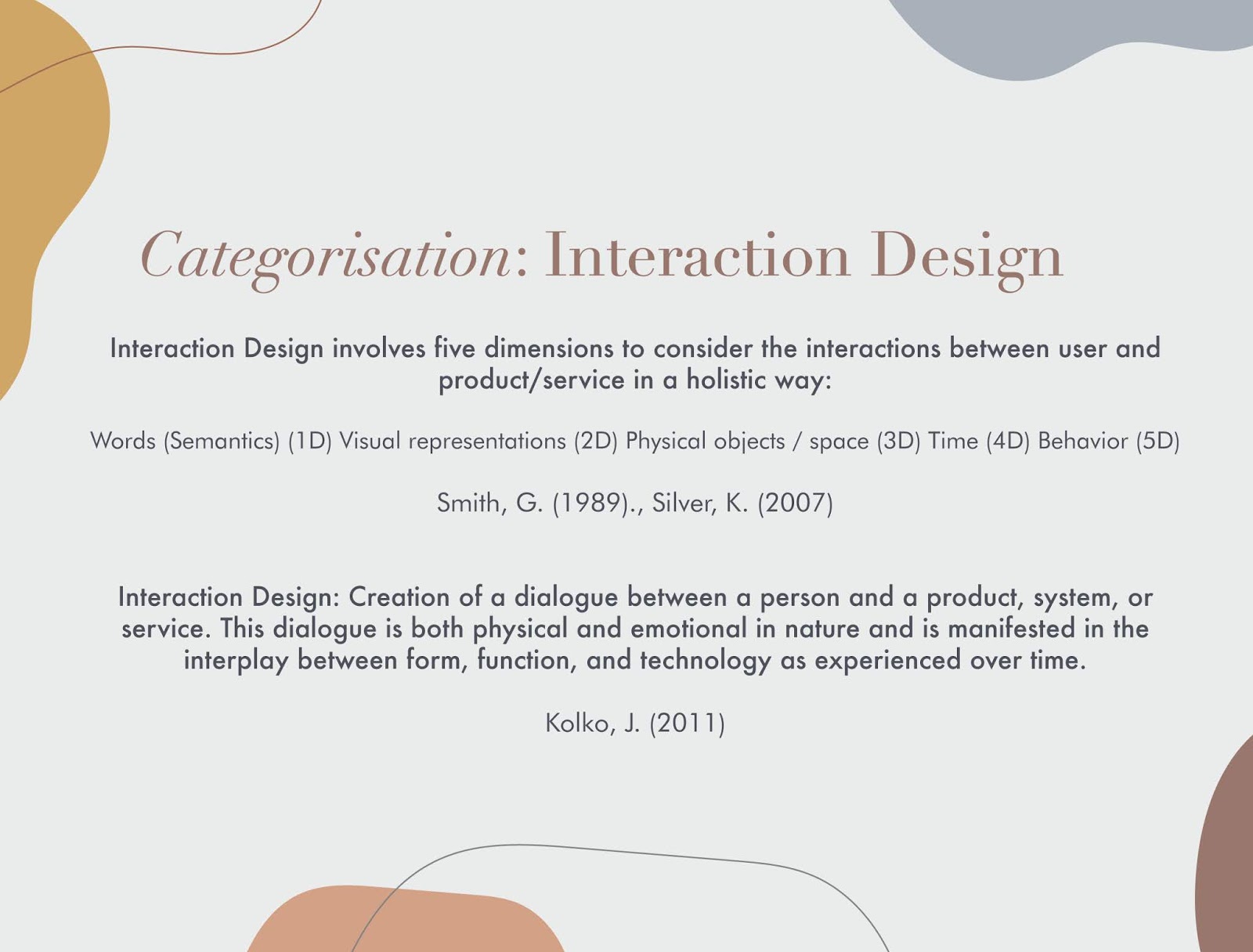I've extracted the important points from my essay and critical discourse seminar presentation for this post.

Outline of Discourse
The outline of the discourse embodies the idea of creating meaning through sense-making and “humansic” (human + intrinsic) experiences to achieve a balanced wellbeing. Sense-making refers to sense and sensibilities. “Humansic” experiences are opportunities that people can switch off from digital media temporarily and feel human again, to get in touch with their innate self and embrace intrinsic values such as happiness, self-control and social connectedness. By having a good understanding of self, one can identify the essentials of what constitutes best to balancing his well-being. The primary stakeholders are individual users and communities. This diagram indicates key themes that outline the discourse.

Brey highlights three design approaches to designing for human well-being which I put them in a table above. While Emotional Design focuses on arousal of positive feelings through pleasure, Capability Approach to Design focuses on the enhancement of people’s basic capabilities to engage in activities that promote their well-being. Positive Psychology Approach is utilised by designers such as Ruitenberg and Desmet to promote happiness and well-being through meaningful activities and designing products that enable or inspire people to engage in these activities. It focuses on long-term satisfaction while incorporating temporary positive experiences sought in Emotional Design (Brey).
The 3 approaches are equally important to consider, apply and balance when designing for a balanced well-being – pleasure (happiness) must be afforded, capabilities (bodily health, practicality, rationale) must be enhanced and meaningfulness should be present.
Design approaches for a balanced well-being
To design for balanced well-being and to design products to make sense and be meaningful to users, the 3 approaches must be applied together with design sensibilities. Design sensibilities consist of the ability to tap into intuitive qualities such as delight, beauty, personal meaning and cultural resonance (Hendrix and Surl). Designers must be aware and create natural paths toward competent use, and meaningful human engagement-product semantics (Krippendorff). By having a cultivated sensibility mindset, designers may optimise the role of positive affordances, enrich meaning-making and avoid designing wrong prompts which lead users to different action or result.
Designers need to know what constitutes well-being for the expected user(s) of the design. Design for well-being may therefore require studies of users, such as questionnaires, tests or experiments to reveal their preferences, values, or other traits (Brey). Meanings are always someone’s construction and depend on context and culture, in order to design for human well-being, a second order understanding is necessary - designers will need to understand users’ understanding and involve themselves in dialogue with their stakeholders; and invite them to participate in the design process (Krippendorff).
Designers need to know what constitutes well-being for the expected user(s) of the design. Design for well-being may therefore require studies of users, such as questionnaires, tests or experiments to reveal their preferences, values, or other traits (Brey). Meanings are always someone’s construction and depend on context and culture, in order to design for human well-being, a second order understanding is necessary - designers will need to understand users’ understanding and involve themselves in dialogue with their stakeholders; and invite them to participate in the design process (Krippendorff).
Design Framework
For interventions to be potentially successful, the design process needs to be a continual feedback loop and an open dialogue with all the stakeholders – understanding what users need/want/understand/past experiences in a socio-cultural context, product semiotics, affordances and all action possibilities. Crowdsourcing practice such as participatory design is also part of the process. Optimising for affordances may be key, but in the event of a changed product, different impact, usages and interpretation, designers can also analyse the new concepts of use, identify new value and employ Kenya Hara’s Unlearn to Learn method to improve product inference.
By using this framework, design interventions seek to help user achieve a balanced well-being and address the gaps in between.

Projected flow diagram of user’s interaction with intended prompts
The diagram projects the flow of how the user will interact and react to the design prompts. The design framework will be applied when designing for sense-making and “humansic” experiences. The interactions and experiences afford opportunities for meaning-making, trigger user’s emotions and shift his perception. Interpretation layer is where user tries to understand and make sense of from the interactions. User will move to awareness stage where he develops recognition and realisation. User will learn to develop better sensibilities, understand the importance of balance and integrate meaningfulness in activities before moving into “enaction” layer, where he starts to take action and implement change.
The last stage is adaptation where his sensibilities supports, balance sustains and meaningfulness narrates towards behavioural change. However this stage may be a struggle as relapse and maintenance are at constant conflict and this is where designer can come in with a reinforcement layer to help users to maintain the transition. The dotted line at the top is a feedback loop back to design framework.
“Enaction”: The process of enacting an action, putting something into practice.

There are more case studies and further discussion in my essay, and if you would like to read it, please click here.









No comments
Post a Comment